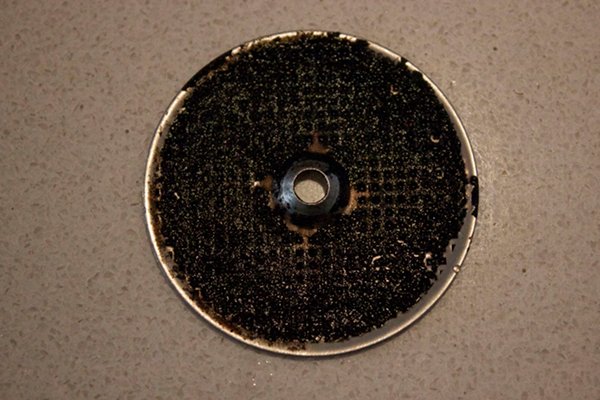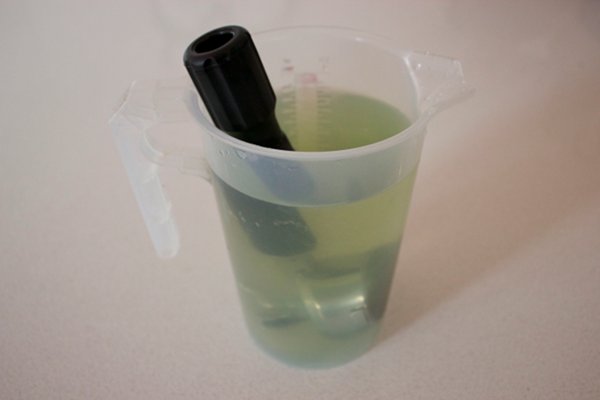One of the most important, but often overlooked, factors in producing excellent quality coffee is keeping your espresso machine clean. At the heart of every great cappuccino, latte, flat white, or other espresso based drink is a great shot(or shots) of espresso. With a good quality home espresso machine, well roasted freshly ground beans, and a bit of practice anyone can produce espresso at home that is as good, if not better than what you can buy in a cafe. Unfortunately no mattery how good your coffee is, how many barista courses you attend, or how expensive your machine; if your machine is not clean, the results will be average to awful. One of the most vital routines for a commercial espresso operation is keeping their espresso machine clean; this is also true for the home barista. You have almost certainly experienced a cafe with a dirty espresso machine; often the coffee will taste burnt, bitter, over extracted; more-often than not these negative tastes are the result of a dirty machine.
This article deals with cleaning a single boiler (non-heat exchanger) home espresso machine, for details on how to clean an e61 grouphead espresso machine please see here.
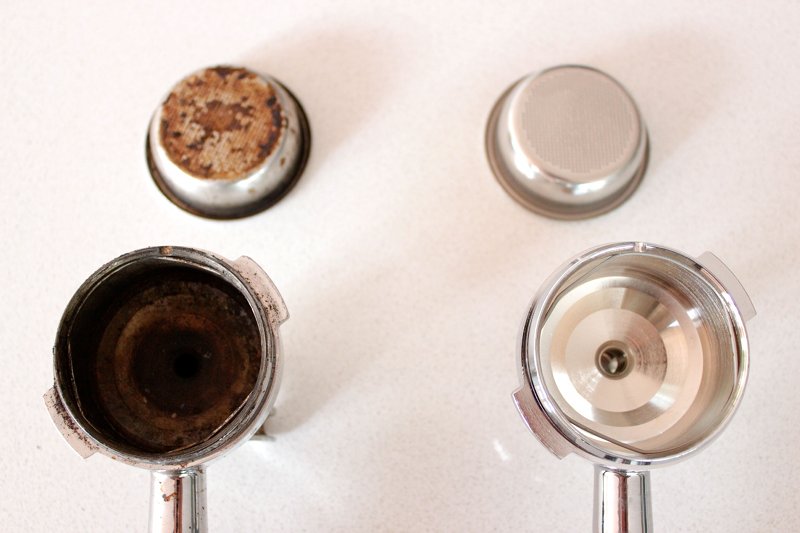
You definately do NOT want an espresso from the portafilter on the left.
WHAT do you mean cleaning? WHY do it?
When we talk about cleaning an espresso machine we are not talking about wiping the exterior, or polishing the chrome/stainless exterior, we are talking about cleaning the internal components involved in brewing/extracting the coffee to remove coffee residue that can taint your drink.
Espresso is produced by forcing heated water under pressure through coffee to extract the flavour containing oils from the beans into your drink; it is these oils that give the tasty crema. These oils are also very sticky and adhere to the brewing group and portafilter; as each shot of espresso is extracted the coffee residue builds up wherever the espresso flows. Unfortunately as soon as the coffee has been extracted, these oils are starting to go stale. Over time the residue becomes visible as a dark brown/black layer. If not cleaned, this stuff is going into your coffee! Yuck!
WHAT do I need to clean my machine?
Cleaning an espresso machine is pretty straightforward and requires just a few items. Primarily you need a good quality espresso machine cleaner and descaler (we use and recommend Urnex Cleancaf); note this is not backflushing solution, backflushing solution is designed for cleaning e61 style groupheads and three-way valves. You will need a large jug for mixing the cleaning solution and soaking parts. An abrasive cleaning cloth is useful for cleaning parts, and a kitchen closing is useful for cleanup.
Here is a list of what you will need:
- Espresso Machine cleaner and descaler (such as Urnex Cleancaf)
- Hot water
- Large 1L glass or plastic jug
- Grouphead brush
- Abrasive kitchen scrubber (the little green cloths used to clean pots)
- Kitchen cloth
- Roll of kitchen towels
Optional:
- Screwdriver, hex key, socket set for removing the dispersion screen
Clean and descale.
Firstly we are going to clean and descale the internal components of the espresso machine. Start by making sure the espresso machine is switched off and then empty the water reservoir. Take one sachet of Cleancaf and pour it into your large jug. Fill the jug with one litre of warm water and give it a stir to dissolve the solution. Note: the Cleancaf solution is blue, this is designed to help you ensure the solution is flushed through the machine.
Pour the cleaning solution into the water reservoir and switch the espresso machine on. Remove the portafilter from the grouphead and operate the pump until water flows from the grouphead, then switch the pump off. Allow the machine to come up to operating temperature and let the cleaning solution sit in the boiler for 10 minutes or so. Operate the pump for 10 seconds and allow water to flow through the grouphead then stop and allow it to sit for 10 seconds. Open the steam valve and allow water to flow through the steam wand (depending on your espresso machine you may need to operate the pump to flush cleaning solution through the steam wand). Operate the pump for 10 seconds and allow water to flow through the grouphead then stop and allow it to sit for 10 seconds. Repeat this process until all the cleaning soluition has been used and the water reservoir is empty.
Remove the water reservoir and clean it with fresh water, reinstall the water reservoir and fill it with a minimum of two litres of fresh clean water. Flush the fresh water through the grouphead and steam wand as you did with the cleaning solution until the water reservoir is empty or until only clean fresh water flow through the machine.
Soak and scrub.
Switch off the espresso machine and remove the portafilter from the grouphead; if the steam wand can be removed, remove this also. Remove the basket from the portafilter.
Optional: Use a screwdriver, hex key, or socket set to remove the dispersion screen from your machine.
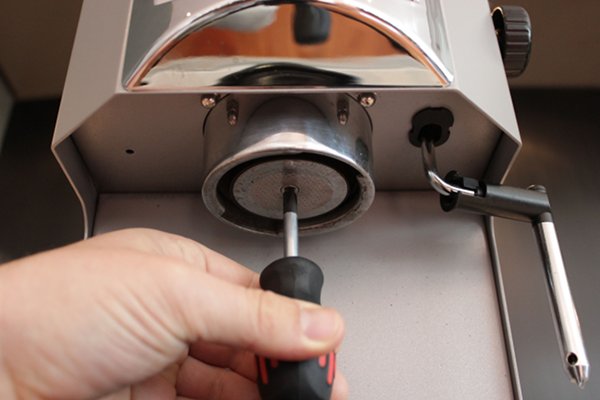 |
|
| Removing the dispersion screen is easy |
Extremely dirty dispersion screen |
Dissolve a sachet of Cleancaf in a large jug filled with one litre of warm water. Place the portafilter, baseket(s), steam wand, and dispersion screen into the jug of detergent and allow to soak overnight.
After a good soak you will notice that the cleaning solution has changed colour as the coffee residue has been dissolved into the cleaning solution.
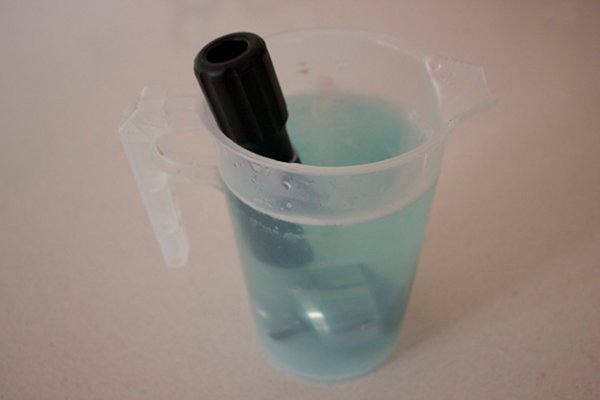 |
|
| Fresh cleaning solution |
After soaking overnight |
Much of the coffee reside from the portafilter, basket, and dispersion screen will have been dissolved; any remaining residue can be removed using a light abrasive kitchen cloth (these are the green clothes used to clean pots). Once everthing is clean tip out the cleaning solution and rinse all components under warm water.
Clean the grouphead and headseal.
Switch off the machine and let it cool down. If you have removed the dispersion screen, leave this off. Using a grouphead brush scrub around the headseal and dispersion screen to remove any stray coffee ground and oily residue. It is can be beneficial to dip the grouhead brush in a concentrated solution of espresso machine cleaner to assist with cleaning. Once everything is clean, reattach the dispersion screen if this has been removed.
Switch on the espresso machine and let it come up to operating temperature. Operate the pump to flush any remaining cleaning product from the dispersion screen and headseal. Insert the basket into the portafilter and attach to grouphead, opearte the pump to again flush some fresh water through the dispersion screen, headseal, and portafilter. Reattach the steam wand (if removed) and open the steam valve to flush any remaining cleaning solution from the steam wand.
Clean and ready
Voila, your machine is all clean and ready to make some espresso! Your coffee will taste like it has never tasted before. Enjoy!
Hints and tips:
A good habit that will help to keep your machine clean is to conduct the "portafilter wiggle" each time you use your machine, or at least once per day. The portafilter wiggle is very quick and easy to do. With your machine switched on and ready for use, remove and clean your portafilter. Insert the portafilter into the grouphead, but don't lock it in tight. Switch on the pump and allow hot water to flow through the portafilter; once water is flowing, move the portafilter handle slightly in the direction you would use to remove it from the group, then "wiggle" it back in the direction to tighten it. Remeat this about 10 times, then switch off the pump. Remove the portafilter and you will notice stray coffee grounds have collected in the portafilter basket. Clean the portafilter and reinsert it into the grouphead. You are done! Hooray, that was quick and easy.
Questions and Answers:
CANT I just use hot water? - Unfortunately not, using hot water alone would be like trying to remove an oil stain from clothes using just water. To effectively remove the oil residue you need the detergents contained in the espresso machine cleaner to dissolve and separate this residue from the components inside the machine.
CAN I use dishwashing detergent? - Definately not, do not use dishwashing detergent in your espresso machine. While dishwasing detergent may help to breakdown the coffee reside inside your machine, it has some other characteristics that could damage your machine and leave detergent residue inside your machine. Dishwashing detergents often contain foaming agents (this creates the bubbles) which would not be ideal inside your boiler, detergents also tend to leave a filmy residue inside your machine.
CAN I use vinegar? - Vinegar is made for use as a food, not as a cleaner. While the acid in vinegar may help to dissolve and clean espresso components, it also has some less than desirable properties. It is best to use a dedicated espresso machine cleaner, these are inexpensive and easily available here.

